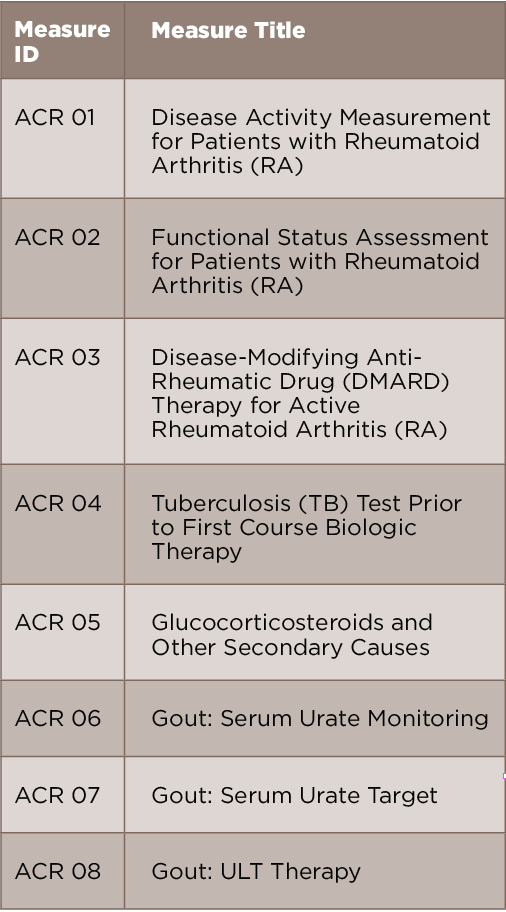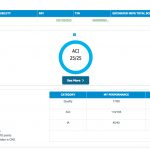This tool is being utilized by nearly 650 ACR members every day, and as the data analytics become routine, RISE gives us the promise of quality care delivery. For example, in a large physician practice that has been using RISE for nearly 18 months, individual physicians can review interactive dashboards, and the practice manager pulls performance reports on individual providers. Performance metrics are used to focus on areas for improvement and develop improvement plans.
Small practices can do the same, channeling RISE data analytics into better care. In this way, RISE empowers small practices, by providing analytics that a small practice may not have had access to before RISE.
Consider this practical scenario. Say I’m a physician scoring below the national average for prescribing disease-modifying anti-rheumatic drugs for patients with rheumatoid arthritis (RA). I can log in to RISE, see which patients met the intended measure, which patients were exclusions and which patients should have met the measure but didn’t. This can help me pinpoint the underlying cause of the performance metric and make adjustments as needed.
Put simply, RISE is an invaluable and incredibly useful feedback tool for rheumatologists, especially in a healthcare environment highly influenced by MACRA. As a practicing rheumatologist, I genuinely believe this tool will change the way we manage care. Although introducing a new digital data collection system may sound arduous and time consuming, once a practice goes through the initial process to connect to the registry and the data validation steps, very little maintenance work is required. Practices that have connected to RISE appreciate the feedback that RISE can deliver, and clinicians continue their routine practice and documentation. The ACR’s RISE team works with the physicians to make sure the data continue to be accurately mapped to the registry.
Variability in medical records is not a problem using RISE. Maybe one rheumatologist inputs disease activity scores in a structured assessment section, and you put your scores into differently structured notes. Fortunately, most differences don’t matter. Once providers sign up for RISE, the RISE team starts the mapping process with the practice. The RISE connection process unfolds over several conversations with your practice physicians. The RISE team learns exactly how and where you document information in your EHR to make sure that all the relevant data from your practice are carried over to the RISE registry to capture the necessary quality scores. The mapping process requires some time and effort from your practice on the front end, but is well worth the value gained and money saved later on.
Qualified Clinical Data Registry
As a qualified clinical data registry (QCDR), RISE has additional benefits for rheumatologists who choose to follow the MIPS payment pathway under MACRA. Responding to advocacy from the ACR and other groups, the CMS (Centers for Medicare & Medicaid Services) has agreed to allow the use of QCDRs—including RISE—to report on three of the four required reporting categories under MIPS. This means that rheumatologists who use RISE for MIPS reporting do so seamlessly after signing an agreement allowing the ACR to submit data to CMS on their behalf. Automated and streamlined MIPS reporting through RISE will eliminate a significant hassle for physicians and allow the rheumatologist to focus on quality delivery of care to their patients.


